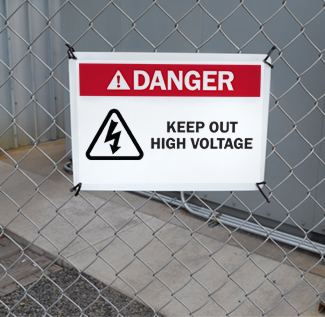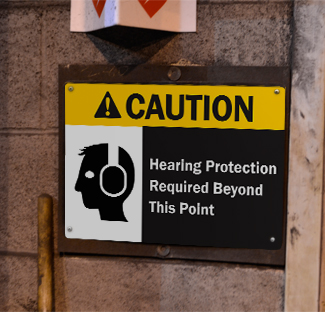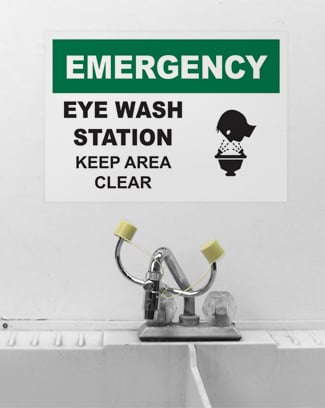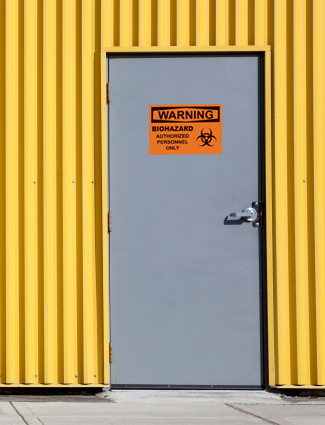Resource Navigation
OSHA 1910 145 Warning Signs and Tags
03
February,
2023
3 MINUTE READ

No matter the industry, hazards are rampant in workplaces throughout the United States. Manufacturing equipment, conveyors, forklifts, slippery surfaces, and ladders are just some of the many hazards workers face on the job.
Given these risks, OSHA has developed guidelines for signs and tags that identify workplace hazards (29 CFR 1910.145). The important standard explains design requirements and informs employers when safety signs, labels, and tags must be used.
When the regulation was created, it aligned with the ANSI Z35 industry standard for safety signage. Today, OSHA's rules allow employers to use the designs that were originally described in this regulation, or the updated designs described in the most recent edition of the ANSI standard (now titled ANSI Z535). In addition to what's found in 29 CFR 1910.145, the ANSI Z535 standard offers additional information on safety colors, alert symbols, and pictograms.
Here's a look at how to keep workers safe, establish consistency throughout a facility, and follow OSHA's standard for safety signs (designed to be permanent fixtures in a facility) and tags (temporary warnings about immediate hazards).
 Danger Signs
Danger Signs
"Danger" signs communicate the most serious workplace hazards; they communicate that an employee may die or sustain serious injuries if the hazard is not avoided.
OSHA offers the following basic guidelines concerning "Danger" signs:
- Where multiple signs in a facility warn about the same (or similar) hazards, all those signs should use the same (or similar) designs
- Signs must communicate immediate danger and all necessary precautions
 Caution Signs
Caution Signs
"Caution" signs warn workers when they may experience minor or moderate injuries if they don't avoid the specific hazard.
Here's what OSHA has to say about "Caution" signs:
- Signs should warn against potential hazards or unsafe work practices
- "Caution" signs indicate that workers should take proper precautions to avoid a hazard (PPE advisories, for example)
 Safety Instruction Signs
Safety Instruction Signs
Safety instruction signs usually convey general messages, most commonly concerning health, first aid, medical equipment, housekeeping, sanitation, and general safety measures.
OSHA's standard maintains that safety signs should offer general instructions and suggestions for safety measures. For instance, these signs may point out emergency eye wash fountains and first aid kits.
 Biological Hazard Signs
Biological Hazard Signs
Employers should use biological hazard signs to communicate the presence (or potential presence) of a biohazard. These signs should identify equipment, rooms, and other items that contain (or are contaminated with) biological hazards.
The standard says little else about biohazard sign design, but employers should take the following into account:
- The biohazard symbol should be present and can be black or orange
- A background color is optional; if present, it must offer enough contrast to make the sign clearly visible
- "Danger" and "Warning" signs can also call attention to biohazards
General Sign Design Elements
29 CFR 1910.145 outlines general design elements. Here are a few rules to consider when selecting safety signs:
- Signs must have rounded or blunt corners
- Signs may not have sharp edges, burrs, splinters, or sharp projections
- Fastening bolts and devices must be positioned so they don't constitute a hazard
- Words must be easy to read, accurate, clear, and concise
- Signs must contain enough information to be easily and quickly understood
- Signs should offer positive, rather than negative, suggestions
Guidelines for Accident Prevention Tags
Employers may occasionally use tags, in lieu of signs, for addressing temporary, unexpected, or unapparent hazards (such as when performing lockout/tagout procedures on a piece of equipment). Accident prevention tags are usually used temporarily-only until the hazard in question has been eliminated, or until the hazardous operation has wrapped up.
Here are a few guidelines for using accident prevention tags, as laid out in 29 CFR 1910.145(f):
- Tags should contain a signal word (such as "Danger," "Caution" or "Biological Hazard"), which should be readable from at least five feet away (or longer, if warranted by the hazard)
- The tag's primary message should communicate the specific hazard or provide instruction for remaining safe
- Tags may use symbols, text, or a combination of the two
- All visual communication must be understandable to all employees exposed to the hazard
- Tags should be affixed as close as safely possible to the hazard through wire, string, or adhesive
Resources for Accident Prevention Signs and Tags
Learn more about safety signage, relevant standards, and more with Duralabel Best Practice Guide to OSHA Safety Signs. The free guide breaks down OSHA and ANSI standards, sign classifications, and resources for creating custom safety signage. Grab your Best Practice Guide to OSHA Safety Signs today.
RELATED RESOURCES

What Is OSHA 10? | OSHA 10 Certification |
The term OSHA 10 refers to the OSHA Ten Hour Training that is part of the OSHA Outreach Training Program. The ...
Read
OSHA 1910 144 Color Identification
Standard Number: 1910.144 Safety color code for marking physical hazards. 1910.144(a) Color identification - ...
Read
Five Ways to Meet OSHA Requirements for Safety Signage
Every day, American workers service high-powered equipment, build and fix roads, and manufacture the goods we ...
Read.png)


